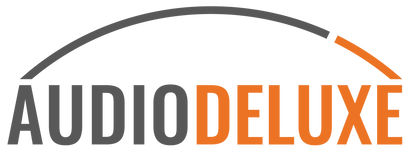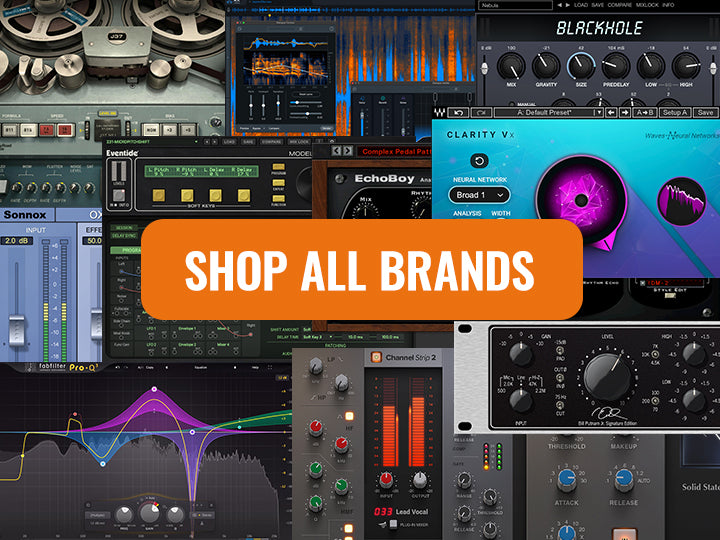Your Cart is Empty
Softube Transient Shaper
Smooth and natural sound
$89.00
Earn [points_amount] when you buy this item.
Rated 4.9 out of 5 stars
13 Reviews
Description
- Dual band transient processing tool
- Add or reduce punch and/or sustain from any sound
- Affect the whole frequency spectrum, only the high frequencies, or only the low frequencies
Transient shaping has become a vital technique in music mixing. The abilities to sharpen or soften the onset of a sound and to lengthen or shorten the decay have been very useful for giving each sound just the right size and position in the mix.
Transient Shaper takes this concept one step further, by letting the user affect either the entire frequency range - which is what most similar tools do - or the treble frequencies or bass frequencies individually.
Punch and sustain
The Transient Shaper lets you control the attack and decay of a track. Optimal for drum mixing, but also a perfect tool to give a vocal track clarity and presence.
Split-band operation
Use the the dual band processor to affect only the treble or bass portion of a sound - separately for the Sustain and Punch parameters - and leave the rest untouched.
Use cases
Use Transient Shaper on drum overheads, turn up the Sustain knob and set its frequency control to Wide. This will simultaneously stretch out the room sound and cymbals, as well as give you more sustain and boom to the toms. But let's say you don't want boomier toms. Then you set the Sustain knob's frequency control switch to Hi, in which case the Sustain processing only affects the high frequencies, i.e. the cymbals and room, but leaves the toms just the way they are. Set the switch to Lo, and hear how you now only get boom from the toms, but the room sound and cymbals stay unaffected.
More than percussion
The dual band operation makes Transient Shaper useful for much more than drum and percussion sounds. Give a vocal track clarity and presence by adding some high frequency transients - add Punch with its frequency slider set to Hi. Or create a darker and more rounded sound that oozes with vintage vibe by instead turning down the Punch knob. Use it on piano, bass, guitar, electronic drums - Transient Shaper works on a wide range of sound types.
The crossover frequency is user selectable, as is the Punch behavior (Fast or Slow). We also added an output distortion section called Clip.
In short
- Dual band transient processing tool.
- Add or reduce punch and/or sustain from any sound.
- Affect either the whole frequency spectrum, only the high frequencies or only the low frequencies.
- User selectable crossover frequency.
- Clip section adds output distortion.
Tech Specs
System Requirements
- macOS Ventura 13, Sonoma 14, Sequoia 15
- Windows 10 (64-bit), Windows 11
- Softube account
- iLok account
- Computer with AU, VST, VST3, and/or AAX-compatible DAW host software
- Internet access (for downloading installers and managing licenses)
Supported CPU Families
Apple macOS computers with Intel Core i3/i5/i7 or Apple silicon (M1 or newer) CPU. Apple silicon is supported natively.
Windows computers with quad-core Intel Core i3/i5/i7 or AMD quad-core processors with SSE 4.2 support.
Other Intel processors (Celeron, Pentium, and Xeon) are compatible if they support SSE 4.2 instructions.
Supported Host Software (DAW)
Any 64-bit VST, VST3, AU, or AAX (Pro Tools 11.0.2 or higher) compatible host application should work. However, due to plug-in host differences between DAWs—and our rigorous standards—we only officially test our plug-ins and instruments in the most recent versions of Pro Tools, Logic Pro, Cubase, Ableton Live, Studio One, and Reaper. Softube plug-ins are not tested regularly in non-listed systems. They will likely work if the system requirements are met. However, we cannot guarantee a solution for issues in unsupported systems.
We strongly recommend using VST3, as some of our plug-ins have features that are not present in the older VST format. Supported sample rates: 44.1, 48, 88.2, 96, 176.4, and 192 kHz, in both mono and stereo. The most recent maintenance release of your DAW application is recommended. AAX DSP is not currently in active development. TDM/VENUE/RTAS are no longer supported. See our Legacy Installers.




